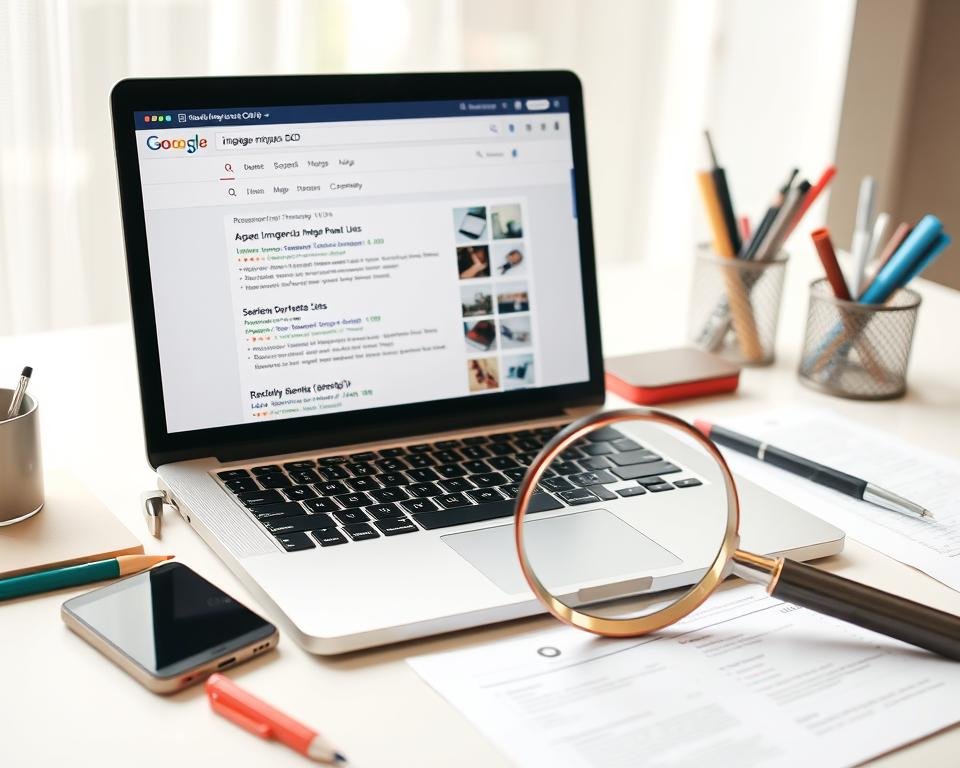I’m here to help you make your images easier to find. Optimizing your images is key to getting your website seen more in search results.
Knowing how to optimize images for search can really boost your website. I’ll show you how to do it right, including tips on file names and alt text.
Key Takeaways
- Understand the importance of Image SEO for your website’s visibility.
- Learn how to optimize your image file names for better search rankings.
- Discover the role of alt text in image search optimization.
- Improve your website’s performance by optimizing images.
- Enhance your visual content’s discoverability with effective optimization techniques.
Understanding Image SEO and Its Importance
In digital marketing, Image SEO is key to getting more website visitors. Search engines keep getting better, making it clear that optimizing images is important. Image SEO means making images better for search engines, so they show up higher in search results. This helps your website get seen more and gets more visitors.
What is Image SEO?
Image SEO is about making images better for search engines. This includes optimizing image file names, alt text, and descriptions. This way, search engines can find and list your images better. This boosts your website’s image search visibility.
Some key image optimization techniques include:
- Using descriptive file names that include target keywords
- Writing compelling alt text that accurately describes the image
- Optimizing image dimensions and file size to improve page load times
Why is Image SEO Crucial for Websites?
Image SEO is key because it brings more visitors to your site. By optimizing your images, you can get higher rankings in search results. This makes your website more visible, improves user experience, and boosts sales.
The benefits of Image SEO are clear:
| Benefits | Description | Impact |
|---|---|---|
| Increased Visibility | Higher rankings in image search results | More traffic to your website |
| Enhanced User Experience | Optimized images improve page load times | Better engagement and conversion rates |
| Improved Conversions | Relevant images support content and calls-to-action | Higher conversion rates |
By learning and using Image SEO, you can make your website more visible online. This brings more visitors to your site.
Best Practices for Image Optimization
To make your website more visible, you need to optimize your images well. This can really help your site rank better in search engines and make it easier for users to navigate.
Choosing the Right File Format
Picking the right file format for your images is key. You have JPEG, PNG, and GIF to choose from. JPEG is best for photos because it handles lots of colors well and compresses images well. PNG is good for graphics and images that need to be transparent. GIF is great for simple animations.
- Use JPEG for photographic images
- Use PNG for graphics and images requiring transparency
- Use GIF for simple animations
How to Create Compelling Alt Text
Alt text is important for image SEO. It tells search engines what the image is about. Make sure your alt text is clear, short, and includes the right keywords. Don’t overdo it with keywords and keep it sounding natural.
- Describe the image content accurately
- Keep the alt text concise
- Include relevant keywords naturally
Optimizing Image Dimensions and File Size
It’s important to make your images load faster. Compressing images without losing quality is a good strategy. Tools like TinyPNG and ImageOptim can really help shrink file sizes.
- Resizing images to the right size
- Compressing images with tools like TinyPNG
- Using responsive images for different screens
Leveraging Image Filenames for SEO
Image filenames are key in image SEO. They give search engines context about the image. By optimizing your image filenames, you can boost your website’s search engine ranking. This leads to more traffic.
Best Practices for Naming Images
Naming your images right is vital for SEO. Here are some tips:
- Use names that clearly show what the image is about.
- Avoid names like “image1.jpg” or “photo.jpg.”
- Use hyphens to make the name easier to read.
- Keep the name short but informative.
Using Keywords in Image Filenames
Adding the right keywords to your image filenames can help with image SEO. Here’s how:
- Find the main keyword for the image and add it to the filename.
- Add related keywords for more context.
- Don’t overdo it with keywords; keep it natural and clear.
For example, a good filename for a red sports car image could be “red-sports-car.jpg.” It’s clear, includes keywords, and easy to read.
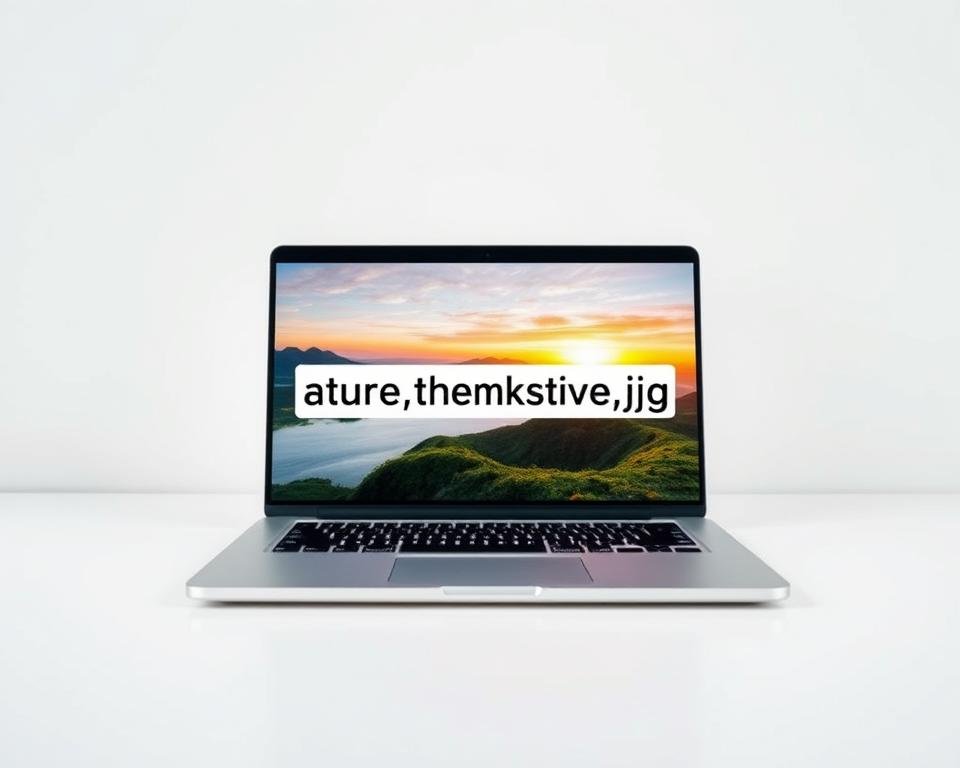
By following these tips and adding keywords to your image filenames, you can boost your website’s image SEO. This will help your overall search engine ranking.
The Role of Image Sitemaps
An image sitemap is a tool that helps search engines find your website’s images. It makes your site more visible and brings more visitors.
What is an Image Sitemap?
An image sitemap is an XML file that lists your website’s images. It gives search engines info like where the image is, its caption, and title. This helps users find your images in image searches.
Key benefits of an image sitemap include:
- Improved image discoverability
- Increased website traffic
- Better search engine understanding of your content
How to Create and Submit an Image Sitemap
Creating an image sitemap is easy:
- Choose the images you want to include.
- Make an XML file with the images’ details like URL, title, and caption.
- Send this XML file to search engines like Google through their webmaster tools.
You can use online tools or plugins to make image sitemaps easier. Many CMS plugins can automatically create and update your sitemap as you add new content.

After making your image sitemap, submit it to Google Search Console. This simple step boosts your image SEO. By following these steps, your images will be indexed well and help your SEO.
Utilizing Schema Markup for Images
Schema markup helps search engines understand your images better. It adds extra info about your images. This makes them more visible and relevant in search results.
What is Schema Markup?
Schema markup is special microdata for your website’s HTML. It gives search engines more info about your content. For images, it includes details like the subject, caption, and licensing.
To use schema markup for images, add specific code to your HTML. This code tells search engines about your images, like their subject and context.
How Schema Affects Image SEO
Schema markup for images boosts your image SEO in many ways. It makes your images more visible in search results. It also makes them more relevant by linking them to specific topics.
Key benefits of schema markup for image SEO include:
- Improved image visibility in search results
- Enhanced relevance of images to specific search queries
- Better image rankings due to additional context provided to search engines
Using schema markup optimizes your images for search engines. This leads to better performance and more visibility online.
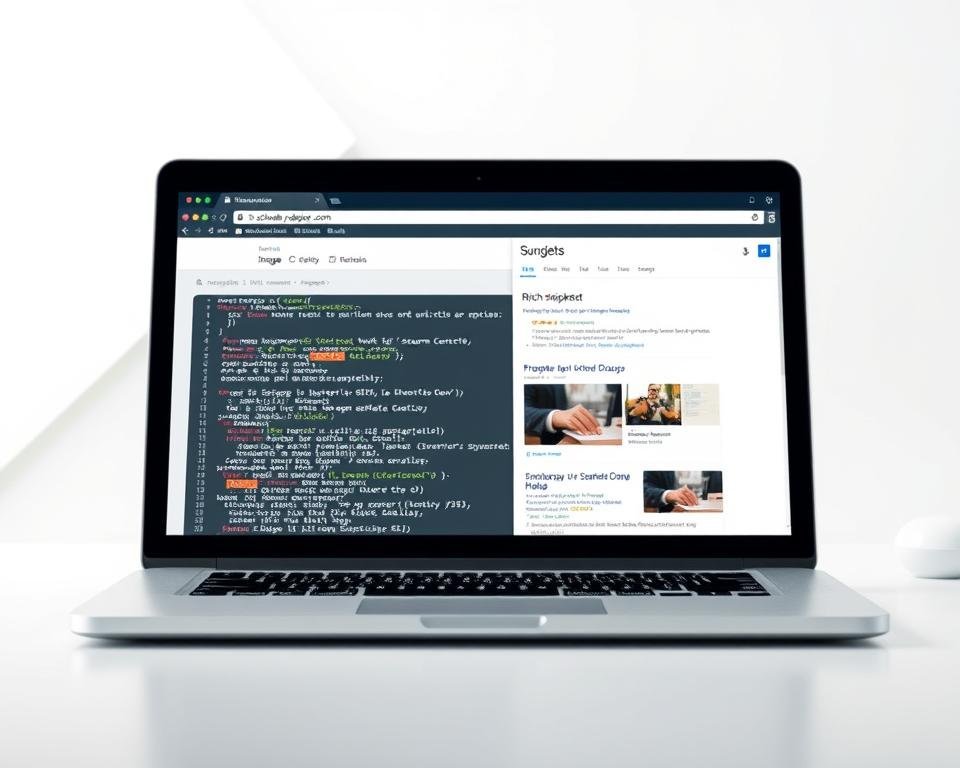
Ensuring Mobile Optimization for Images
It’s key to make sure images work well on mobile devices. This is because most people use their phones to visit websites. So, making images mobile-friendly is a must.
Most users see websites on their phones. So, your images need to be ready for any screen size. This means using responsive images that change size as needed.
Importance of Responsive Images
Responsive images are essential. They make sure your site looks good on all devices. This makes users happy and helps your site rank better in searches.
To make images responsive, you can:
- Use the
img srcsetattribute for different sizes on different devices. - Apply CSS media queries to change how images look based on screen size.
Tools for Testing Image Responsiveness
To check if your images are responsive, there are online tools. Here are a few:
| Tool | Description | Features |
|---|---|---|
| Google PageSpeed Insights | Checks your site’s speed and gives tips to improve. | Finds ways to make images better. |
| Responsive Design Checker | Tests how your site looks on different devices. | Shows how your site looks on various devices. |
| GTmetrix | Gives insights on how to make your site faster. | Recommends ways to improve image quality. |
Using these tools and methods helps make sure your images work well on phones. This improves your site’s performance and user experience.
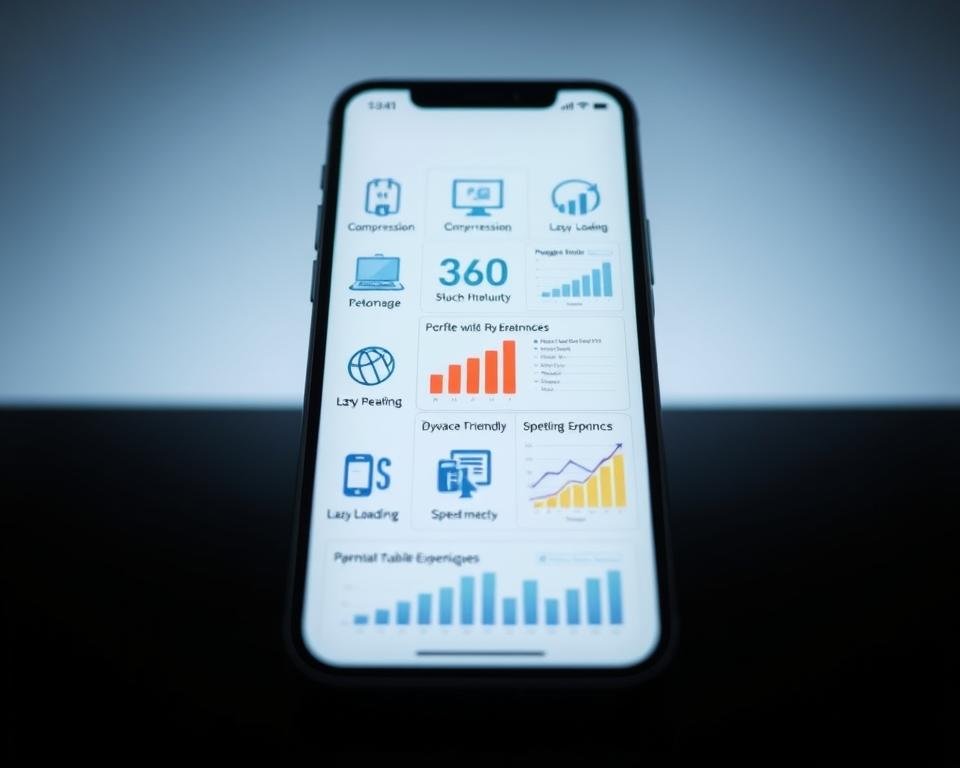
As I keep learning about image optimization, it’s clear. Keeping up with new trends and best practices is key. It helps you stay ahead in the digital world.
The Impact of Page Load Speed on Image SEO
Page load speed greatly affects image SEO. A slow site can cause users to leave quickly. This can also hurt your ranking on search engines.
When you optimize images for SEO, think about page load speed. A fast-loading image boosts your search rankings and makes users happy.
Why Load Speed Matters
Load speed is key because it affects how users feel about your site. A slow site can make users angry and leave. Search engines like Google also look at load speed when ranking sites.
Faster load times mean happier users, more engagement, and more sales. Slow sites, on the other hand, can lead to more people leaving and lower rankings.
| Load Speed | User Experience | Search Engine Ranking |
|---|---|---|
| Fast (less than 2 seconds) | High engagement, low bounce rate | Improved ranking |
| Slow (more than 3 seconds) | Low engagement, high bounce rate | Lower ranking |
Techniques to Improve Image Loading Times
To make images load faster, use image compression. It makes images smaller without losing quality.
Other ways to speed up images include:
- Choosing the right image format (like JPEG, PNG, or WebP)
- Setting image sizes to match the screen
- Using lazy loading to load images only when needed
- Using content delivery networks (CDNs) to spread images
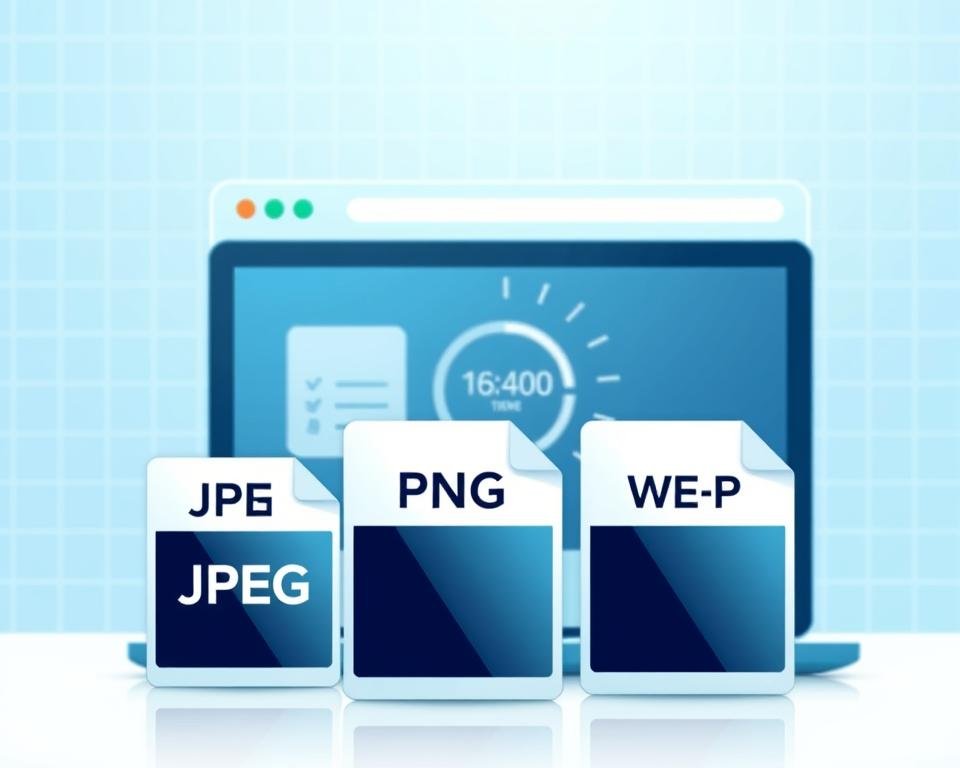
By using these methods, you can make images load faster. This improves both user happiness and your site’s ranking.
Measuring Image SEO Success
To see if your image SEO is working, you need to track important signs. You should know how to use tools to check your image SEO. Also, you should know which signs to watch.
Tools for Tracking Image SEO Performance
There are many tools to help you see how your image SEO is doing. You can use Google Search Console, Google Analytics, and tools like Ahrefs and SEMrush.
I check my image SEO with Google Search Console. It shows me how my images do in search results. It tells me about impressions, clicks, and where they rank.
Google Analytics also gives insights. It shows how images help your website get more visitors and keep them engaged.
Key Metrics to Monitor
When you’re checking your image SEO, watch a few important signs. Look at impressions, clicks, click-through rate (CTR), and where your images rank in search results.
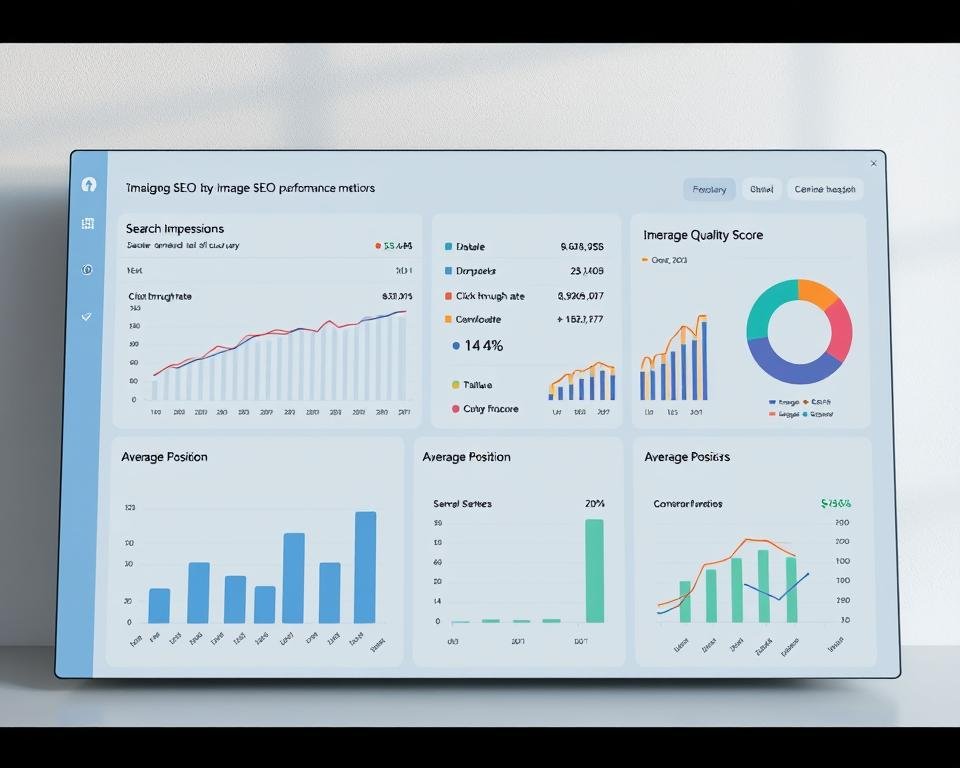
Key Image SEO Metrics:
| Metric | Description | Importance |
|---|---|---|
| Image Impressions | The number of times your images are displayed in search results. | High impressions mean your images are good and well-optimized. |
| Clicks | The number of times users click on your images in search results. | More clicks mean your images are interesting and match what users want. |
| CTR (Click-Through Rate) | The percentage of users who click on your images after seeing them in search results. | A high CTR shows your image titles, alt text, and descriptions work well. |
| Average Position | The average ranking position of your images in search results. | A lower average position means your image SEO is doing better. |
By watching these signs and tweaking your image SEO, you can make your website more visible. This can bring more visitors to your site.
Common Mistakes to Avoid in Image SEO
There are many mistakes in image SEO that can hurt your website. Knowing these mistakes helps you optimize your images better. This can make your website more visible in search results.
Overlooking Alt Text
One big mistake is ignoring alt text. Alt text tells search engines what your image is about. Without it, your images might not show up in searches. So, make sure to add descriptive and keyword-rich alt text to all your images.
Here are some tips for writing good alt text:
- Be clear: Describe what the image shows.
- Use keywords: Add words that match your content.
- Keep it short: Aim for 125 characters or less.
Ignoring Image Size and Load Speed
Another mistake is not paying attention to image size and load speed. Big images can slow down your site. This makes users unhappy and hurts your rankings. To fix this, compress your images to make them smaller without losing quality.
Here are ways to make images load faster:
- Use tools like TinyPNG or ImageOptim to compress images.
- Choose responsive images that fit the screen size.
- Try lazy loading to load images only when needed.

By avoiding these mistakes and following best practices, you can boost your image SEO. This will help your website perform better overall.
Staying Updated with Image SEO Trends
Image SEO is key for a strong online presence. It’s vital to keep up with new trends and tech in image optimization.
Emerging Technologies for Image Optimization
AI and machine learning are changing image SEO. Google’s AI is now better at finding and indexing images. Knowing these new tools helps you optimize your images better.
Future-Proofing Your Image SEO Strategy
Make your images work on all devices and platforms. Use responsive design and the newest image formats. This keeps your site competitive and visible online.
Keep up with image SEO trends and use the best practices. This will boost your website’s performance and attract more visitors.
